Several countries are a part of the Cassini mission.
Click on image for full size
Courtesy of NASA
Cassini
A spacecraft named Cassini will study the planet Saturn for
several years. Cassini blasted off from
Earth in October 1997. After flying
past Venus, Earth,
and Jupiter, Cassini finally arrived at Saturn on July 1, 2004. Cassini
will study Saturn from orbit for four years.
Cassini is also studying many of Saturn's
moons and the planet's incredible rings. Just
before it got to Saturn, Cassini flew near the moon Phoebe.
It gave us our first close look at that strange moon on June 11, 2004.
NASA and the European Space Agency (ESA) are the main groups behind the Cassini
mission. Many different countries helped put the spacecraft together. The mission
was named after Giovanni Cassini,
who discovered the Cassini Division in
Saturn's rings and several of Saturn's moons.
Cassini carries over 12 instruments that it is using to study Saturn and
its rings and moons. The main spacecraft also carries a small lander called
Huygens. The Huygens Probe will parachute down
through Titan's atmosphere and land on the strange moon.
You might also be interested in:
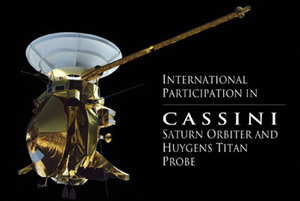
Cassini is on its way to Saturn. It will take Cassini over 6 years to get to Saturn. Cassini was launched on a Titan rocket early in the morning on October 15, 1997. The Cassini probe is one of the biggest
...more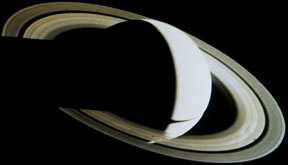
Many people like Saturn's rings. Although Saturn isn't the only planet with rings, it is the only planet famous for them. Almost every image or drawing of the planet has the rings included. But few people
...more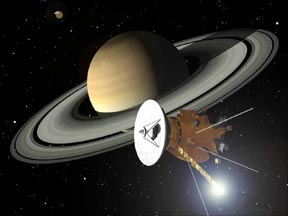
The Cassini spacecraft is on its way to Saturn. It will zoom close past a strange moon of Saturn named Phoebe. Cassini's close flyby of Phoebe will be on June 11, 2004. The best pictures we have right
...more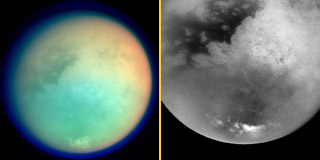
The Cassini spaceship flew by Saturn's moon Titan on October 26, 2004. Titan is Saturn's largest moon, and has the thickest atmosphere of any moon in our Solar System. Cassini took some great pictures
...more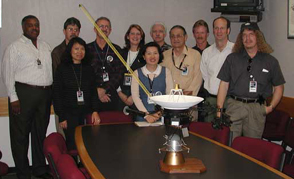
The servicing mission to the Hubble Space Telescope in early March was a great success. The Telescope has been declared healthy and fit...and is better than ever! Though instruments will be tested for
...more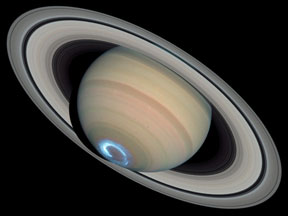
Have you ever seen the Southern or Northern Lights? Earth isn't the only planet that puts on these beautiful light shows, which are also called the "aurora". Aurora have been seen at both poles of Saturn,
...more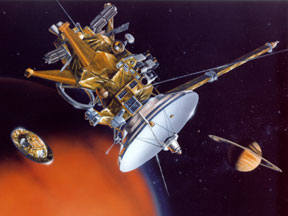
NASA's Cassini spacecraft is in orbit around the planet Saturn. Cassini carried a landing probe, named Huygens, with it on its long journey from Earth. On December 24, 2004, Cassini released the Huygens
...more














